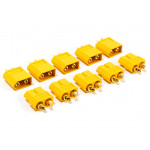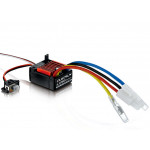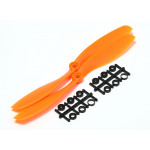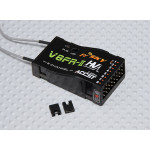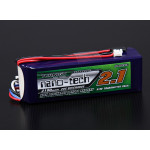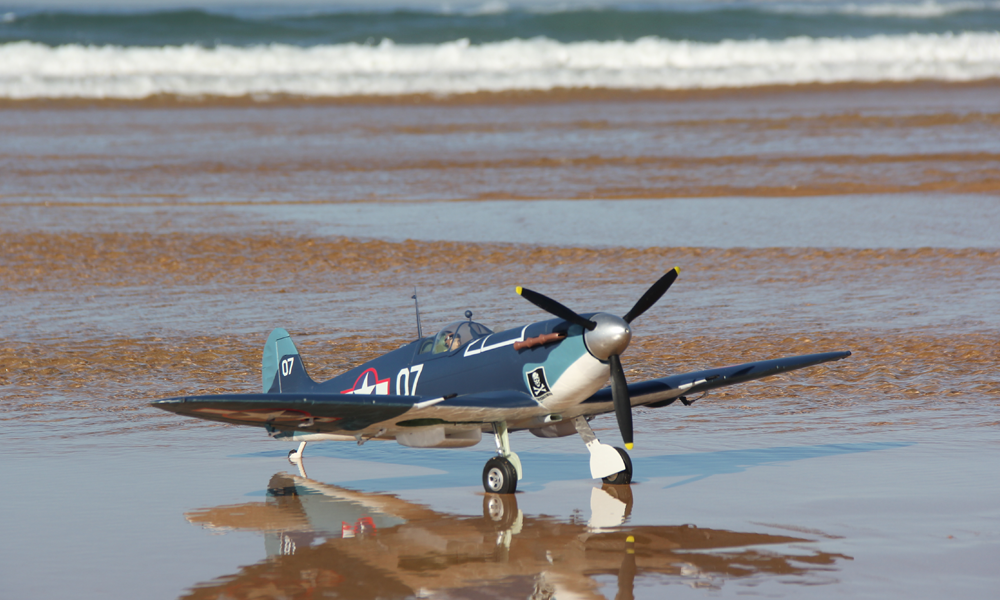
Durafly is known for making stunning looking scale RC aircraft as well as some of the best flying sports planes around. They go to the next level to add all the bells and whistles, literally.
The Seafire breaks new ground for Durafly flying in the face of tradition because it’s a what-if scheme. It is an unusual move that is best described as ballsy because it’s either going to be a great success or an epic failure. The model never existed and so is bound to draw the ire of stewards from the scale community. Let's be honest here. There was no Seafire, hero of the Pacific. So what is the appeal? Simply put, it’s stunning! For an aviation nut like me, I was surprised to first hear about it wondering if someone had heard wrong. Once I spoke to Durafly I was informed that it was indeed the case. I just could not picture it in my head and I thought they must be crazy. Then I saw a photo and immediately loved it. I was sold but I was not sure how the community would respond. 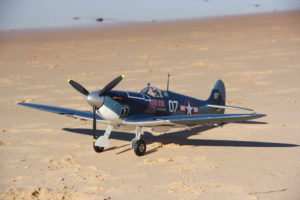 Over the years we have been spoilt for choice and had spitfires in every squadron marking, variation, and decal choice. Just about everything has been modeled, including squadron variants that were based on a tiny island somewhere that saw no action. I’m surprised that someone finally decided to shake things up a little and do something different. There have been a few nay-sayers that I have seen however there were many more positive comments from the community. Hobbyking made a few massive announcements at Sydney's HobbyKing Live Event in May, earlier this year. The Seafire was one of those that were shown. Additionally, among the upcoming product announcements were the super scale Lockheed C-130 Hercules. Hobbyking was kind enough to send me one to fly and review. Assembly was a breeze and took no more than 30 minutes or a couple of beers in the old money.
Over the years we have been spoilt for choice and had spitfires in every squadron marking, variation, and decal choice. Just about everything has been modeled, including squadron variants that were based on a tiny island somewhere that saw no action. I’m surprised that someone finally decided to shake things up a little and do something different. There have been a few nay-sayers that I have seen however there were many more positive comments from the community. Hobbyking made a few massive announcements at Sydney's HobbyKing Live Event in May, earlier this year. The Seafire was one of those that were shown. Additionally, among the upcoming product announcements were the super scale Lockheed C-130 Hercules. Hobbyking was kind enough to send me one to fly and review. Assembly was a breeze and took no more than 30 minutes or a couple of beers in the old money.
Durafly Seafire - Details
Features:
- Plug and Fly, simply add Rx and Lipoly battery
- Tough EPO construction
- Wide flight envelope with stable and scale flight performance
- Quick assembly
- Highly detailed scale finish
- Pacific Theater color scheme
- Choice of 3 decal markings
- Pre-installed scale electric retracts
- Ball Links on all controls
- Functioning scale flaps
- Scale outline and fittings
- Operating pre-installed navigation LED lighting
- Steerable tailwheel
- Can be flown on 3 or 4S
| Specs | |
|---|---|
| Wingspan: | 1100mm (43.3") |
| Length: | 1000mm (39.3") |
| Flying Weight | 1200~1250g (45~48oz) |
| ESC | Aerostar 50A |
| Motor | Aerostar 3536 770KV Brushless |
| Prop | 11.25x7 3-Blade |
| Servo | 6 x 9g |
| Requires: | Battery - 2200-2600mah 3S 60-65C or 2200mah 4S 40C 6 channel Tx/Rx |
First Impressions
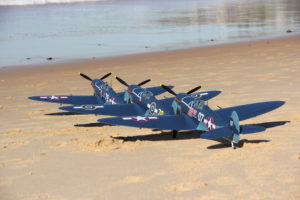 The finish is second to none. Durafly has leed the way when it comes to the finish of models. I love opening the box and inspecting the finish. I might even enjoy that more than flying. I expect this to be well priced with a similar price structure as the mk5s on which this is based. The build is very straightforward and the manual could be condensed into 5 very straightforward steps.
The finish is second to none. Durafly has leed the way when it comes to the finish of models. I love opening the box and inspecting the finish. I might even enjoy that more than flying. I expect this to be well priced with a similar price structure as the mk5s on which this is based. The build is very straightforward and the manual could be condensed into 5 very straightforward steps.
- Install the horizontal stabilizer and connect the servo leads
- Stabilizer secured with the two screws
- Install the wings with the 4 machine screws provided.
- Install the receiver and set up the model on the radio.
- Once the radio is setup then connect the control surfaces.
I used a 2200mah 75C Turnigy Graphene battery and got around 7-minute flights. I was a little aggressive on the throttle; however, I was still able to land at 3.70v. I don’t recommend that you deviate from the suggested 2200mah 4S pack. I think it’s the best fit for this aircraft considering performance, wing loading, and landing gear.
The Seafire is a head-turner. At first glance, it has the profile of a Spitfire and it's not until it passes you, do you realize that there is something a little different about this bird. You either love or hate the appearance and there really are no fence-sitters with this one. Personally, I love the look and I love the way it flies. It’s not a rocket ship but still quick and pleasure to fly. Hopefully, HobbyKing begins to bring out all their models like this. It just makes for nicer flying and there is no doubt about that.
Takeoff
Take off was reasonably simple. I was prepared to add a little rudder input however it was not necessary. The day I flew the model there was a slight crosswind and I wonder if that made a difference because most tail dragger warbirds need a little rudder input on takeoff. I pushed forward slowly increasing throttle and begun to build up speed. Keep an eye on the model and reduce your up elevator input and you increase speed. Once the aircraft has got to speed you can begin to feed in an elevator again until the aircraft rotates. The model will rotate with ease and you can begin to trim the model out.
The Flight
As soon as you have trimmed the model out you can flip the model into its back and check for CG. The model should require very little down elevator to fly straight. You can adjust the CG later as you fine-tune the model. Go up high, cut the elevator, and try to put it into a stall. The model will dip its nose. The flaps can be deployed to 90deg and do a great job of slowing the model down to a crawl. Deploy your flaps and start slowing the model down and get a feel for how she responds. Strangely, I noticed that when the flaps are deployed there is very little change in attitude.
Landing
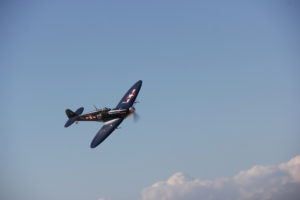 Reduce speed and deploy the landing gear and once deployed you can drop the flaps. Continue to reduce speed and keep the nose up. Allow the aircraft to skink and use the throttle to either reduce or increase decent. I didn’t notice any significant change in attitude when I deployed thanks to the T-tail arrangement.
Reduce speed and deploy the landing gear and once deployed you can drop the flaps. Continue to reduce speed and keep the nose up. Allow the aircraft to skink and use the throttle to either reduce or increase decent. I didn’t notice any significant change in attitude when I deployed thanks to the T-tail arrangement.
Flight-Report
The model required only a few clicks of trim once in the air. The Seafire tracks very well and the model flies likes it’s on rails, I know it’s an overused term but it's factual in this case. Don’t forget that after your first flight you should check all surfaces after the flight and make any required adjustment. This is generally where you will find issues that need to be attended to. You need to check all surfaces for loose fittings or things that might have worked loose in flight. This is normal and you should get into the habit of doing it if you’re not already. Also, be sure to check ESC and motor temps. Just make sure the ESC is getting sufficient cooling along with the motor. It’s easy for models to be damaged in transit so it’s something that you need to do every time to the field and start preparing for the days flying anyhow. The third flight was much more interesting with rolls, loops, inverted flight, and the odd snap roll. The aircraft is responsive and rolls sharply. Add in around 40% expo into the ailerons and elevator.
In Summary
It’s a great flying model that you will immensely enjoy flying. It has no horrible tendencies and flies great on a 4s 2200mah pack. Not only does it fly well it also lands well. Best of luck and happy landings.

